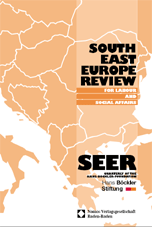The development of the automobile industry in Hungary and the changing patterns of employee interest representation
The development of the automobile industry in Hungary and the changing patterns of employee interest representation
Author(s): András Tóth, Béla GalgócziSubject(s): Economy
Published by: Nomos Verlag
Summary/Abstract: The motor vehicles industry demonstrates a success story within the transformation process of Hungarian industry. The industry is a net winner in structural change, with its share having grown from 6% of total industrial output in 1989 to 13.3% in 1999 (following a nadir of 3.6% in 1992). This has been a two-sided process, however, with a drastic cutback in traditional bus and truck production (Hungary’s former CMEA specialisation) on the one hand, and, on the other, the renewal of car production, assembly and car parts manufacturing based on foreign capital. The 1992-1999 period shows exactly the opposite trends to the previous one, with output growing by 600% at constant prices. Despite the controversial institutional heritage of Hungarian unions, the deep union crisis of the early nineties and the non union-friendly legal regulation, union revival has been fairly successful in the vehicle and component manufacturing industries. This has laid the foundations for the future strengthening of the employee voice in management decisions, in the course of lowering unemployment and sustaining palpable growth in the industry. It is up to the unions to be able to use the increasing assertiveness of employees and to convert their demands into building union organisations which, in turn, should enable employees to have a greater institutionalised voice in their workplaces.
Journal: SEER - South-East Europe Review for Labour and Social Affairs
- Issue Year: 2002
- Issue No: 03
- Page Range: 89-114
- Page Count: 26
- Language: English

